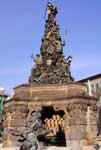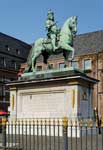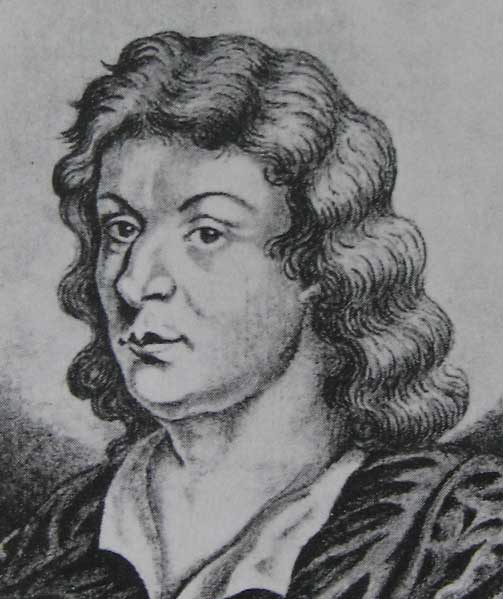
Grupello Pyramid

Jan Wellem equestrian monument
Grupello Gabriel, and Gabriel de Grupello (* May 23, 1644 [1] in Geraardsbergen, † 20 June 1730 in Castle of Ehrenstein in Kerkrade) was a Flemish sculptor.

Life
Grupello was born in Geraardsbergen in East Flanders, the son of Italian into Spanish service the cavalry captain and his Flemish ancestry Bernardo Rupelli Cornelia Delinck. His father, who died early, belonged to the higher non-noble class of society. Grupello settled later by Chevalier de Grupello address, a noble lineage is no evidence, however.
Age of fourteen he began a five-year apprenticeship as a sculptor Artus Quellinus at Antwerp, is not whether the younger or the older known, but probably at Arthur Quellinus the Elder. Then went to the Hague Grupello sculptor John Lasson and finally to two years of study in Paris and Versailles, where he learned during a two-year stay, the bronze casting.
In 1671 he applied for citizenship in Brussels and opened his own workshop. He worked for various rulers, including the Spanish King Charles II, William II of Orange and the Elector of Brandenburg, Frederick III. Grupello 1695 was appointed by the Palatine Elector Johann Wilhelm of the court in Düsseldorf Hofstatuarius. Grupello created numerous images of the royal couple in marble and bronze, and was responsible for the supervision of craftsmen who worked on the electoral palaces.
With the death of Electors 1716 work of the sculptor at the court ended. Johann Wilhelm's successor, Elector Carl Philipp led by austerity and dismissed officials and artists in grace. Emperor Charles VI. 1719 appointed him Imperial Statuaris with a pension. Grupello now turned mainly to the sacred art. Grupello 1725 and his wife moved to the daughter who was married to a royal liege director at Castle of Ehrenstein. He died in 1730 at the age of 86.
In Düsseldorf, Neuss and Mannheim roads were named after Grupello.
Work
As a major work Grupellos Brussels time is of the marble wall fountain, which he created for the ballroom of the wholesale fish merchants' guild. Düsseldorf creative period of his rise mainly produced two monumental works of art made of bronze casting, the equestrian statue of the Elector Johann Wilhelm (Jan Wellem) at the Düsseldorf market place and the Grupello pyramid that stands today on the parade ground in Mannheim. In addition, he made statues which are to be seen among others in the palace gardens of Schwetzingen Palace. Of the sacred art of his late works are as much lost in the fire and were destroyed by the Düsseldorf castle.
Gabriel Grupello, self-portrait in 1700, Museum Kunst Palast, Dusseldorf
Mother of God, basswood in 1725, Cologne Museum Schnutgen
References
Udo Kultermann: Gabriel Grupello. Berlin 1968.
Rudi cod: Grupello pyramid in a new light. Mannheim 1993rd
Kunstmuseum Dusseldorf (ed.): Guide to the Collections Vol first Dusseldorf 1992nd
Notes and references
↑ Udo Kultermann: Gabriel Grupello. Page 26
From Wikipedia. Text is available under the Creative Commons Attribution-ShareAlike License
